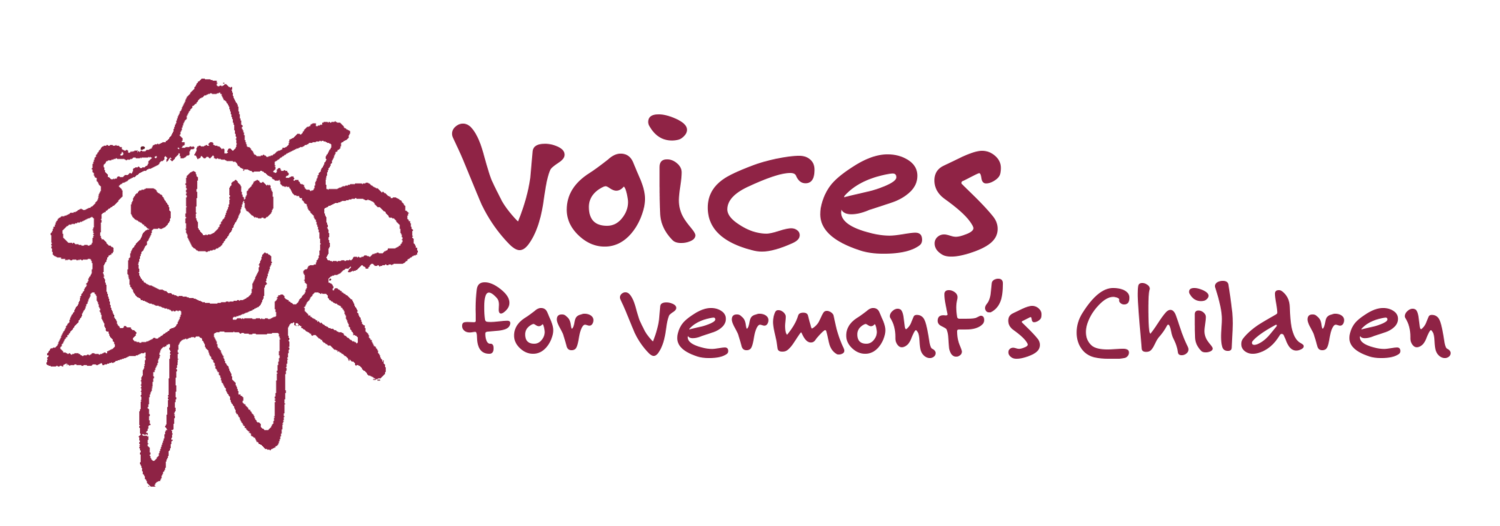Budget Update
Voices for Vermont’s Children stands with the many organizations serving and giving voice to Vermonters who are being left behind by an uneven economic recovery in asking the legislature to increase investments in children and families.
Almost 16% of Vermont children (more than 18,000) are living below the poverty line, a higher rate than what was seen during the recession. Almost half of these are living in what’s defined as “extreme poverty:” less than 50% of the FPL. We are talking about 9,000 children struggling for survival in a state that prides itself on being a leader in child well being and health. Families need economic security in order to create safe, healthy environments for children.
The growing body of research around social determinants of health carries important implications for state budgets. Research on health care spending and health outcomes around the globe found that more robust investments in social services correlated to better health outcomes. Building on this research, Blue Cross Blue Shield Foundation in Massachusetts published a study showing strong evidence that investments in housing, nutrition, and case management had significant positive impacts on health outcomes. With that background, consider that Vermont has one of the highest rates of homelessness in New England, second only to Massachusetts. Vermont’s rate of homelessness is 20 percent higher than the national average, and contrary to national trends, Vermont saw a 25% percent increase in overall reported homelessness and a 48% percent increase in family homelessness between 2012 and 2013. (For more information on housing and homelessness in Vermont, see our 2015 report)
Voices for Vermont’s Children urges legislators to look at every budget request through the lens of how it will improve child and family economic security and health and prioritize those that have been shown to have positive impacts.
- Start by increasing Reach-Up grants to cover more of the family needs budget by adjusting the “ratable reduction” to at least 55% of basic needs and gradually increase over time.
- Restore the FY 16 budget reduction of $125 a month in Reach Up benefits for families who have a member receiving disability benefits.
- Increase investments in the Child Care Financial Assistance Program.While we recognize that a comprehensive financing solution is being explored by the Blue Ribbon Commission for Financing High Quality, Affordable Child Care, we support continued incremental increases to increase the affordability of childcare for Vermonters.
- Appropriate funds for the Expanded Learning Opportunities special fund to increase access to quality after school and summer learning programs, particularly for low income children and families.
- Fully fund the Vermont Housing and Conservation Board and increase support for supportive housing programs.
- Finally, Voices supports the proposed increase in staffing for the child protection system, and urges the legislature to consider the budgetary needs of community support providers who serve as critically important partners in the child protection system.
If the goal is for children to be raised in safe, stable families, it’s incumbent on us as a state to ensure that conditions exist to support that vision. Read Michelle Fay’s testimony to the House Appropriations Committee here.
Status of the Bill: House Appropriations continues to take testimony from administration officials on department budgets, and completed a series of public hearings around the state. Advocate hearings also took place prior to the Town Meeting break. Policy committees have also submitted memos with their recommendations on the parts of the budget pertaining to their jurisdiction. The Human Services committee’s priorities overlapped Voices’ in three places:
- Support for the Governor’s recommended investments in the DCF Family Services division (ranked most important);
- Support for increasing Child Care Financial Assistance Program (child care subsidy) to come closer to market rates (ranked important); and
- Restoring the $125 cut to Reach Up for recipients on disability (ranked lower priority).
When the legislature reconvenes the committee will aggregate all of this input into a budget bill that will come to the floor in late March.
